10 Expert Solutions for When Your Heater Isn't Heating: | A Comprehensive Guide

When your heater isn’t heating, it can leave you out in the cold. This comprehensive guide offers 10 expert solutions to troubleshoot and fix common heating issues. From simple thermostat adjustments to more complex system checks, we’ll walk you through each step to help restore warmth to your home efficiently and safely.
10 Expert Solutions for When Your Heater Isn’t Heating: A Comprehensive Guide
As the chill of winter sets in, there’s nothing more frustrating than a heater that refuses to heat. The silence of a non-functioning heating system can be deafening, leaving you shivering and searching for answers. But fear not! Whether you’re dealing with a stubborn furnace or a temperamental heat pump, we’ve crafted the ultimate troubleshooting guide to help you diagnose and potentially fix your heating woes.
Your fridge is a kitchen superstar as it keeps all your food fresh and drinks cold.
But does the fridge feel warm when you open it?
Is there water all over the floor?
Fridge issues are the worst!
Check Your Thermostat: The Command Center of Comfort
Your thermostat is the brain of your heating system, and sometimes, it just needs a little nudge. Here’s what to do:
- Ensure it’s set to “Heat” mode. It sounds simple, but you’d be surprised how often this is overlooked!
- Bump up the temperature setting by 5 degrees. This can kickstart a stubborn system.
- Check if your thermostat is level and securely attached to the wall. A tilted thermostat can give false readings.
- Replace the batteries if it’s battery-operated. Low power can cause erratic behavior.
- Gently clean the interior with a soft brush. Dust can interfere with its sensors.
Inspect Power Sources: Fueling the Flames of Warmth
No power means no heat. Let’s make sure your system is getting the juice it needs:
- Locate your furnace switch and make sure it’s flipped to the “On” position.
- Check your circuit breaker. A tripped breaker can silently shut down your entire heating system.
- Make sure that the front panel covering the blower motor is securely fastened. Many systems have a safety switch that prevents operation if this panel is loose.
Change the Air Filter: The Lungs of Your Heating System
A clogged filter is like trying to breathe through a straw. Here’s why it matters:
- Replace your air filter every 1-3 months. Mark it on your calendar!
- A clean filter ensures optimal airflow, preventing your system from overworking and shutting off prematurely.
- Clean filters can improve your indoor air quality and potentially lower your energy bills.
Verify Gas Supply: Feeding the Fire
For those with gas furnaces, ensuring a steady supply of fuel is crucial:
- Find your gas valve and confirm it’s in the open position.
- If you have an older system with a pilot light, verify it’s lit. No flame means no heat!
Examine Vents and Registers: Clear the Path for Warmth
Sometimes, the heat is there, but it’s not reaching you. Let’s clear the way:
- Walk through your home and ensure all vents are open and unobstructed.
- Move any furniture or rugs that might be blocking the airflow.
- Consider a professional duct cleaning if you suspect blockages deeper in the system.
Clean Key Components: A Little TLC Goes a Long Way
Regular cleaning can prevent many common heating issues:
- Gently clean the blower fan with a soft brush or vacuum attachment.
- For gas furnaces, carefully clean the flame sensor. A dirty sensor can cause your system to shut off unexpectedly.
Look for Leaks: Patching Up the Problem
Leaks can be silent heat thieves. Here’s what to check:
- If you have an oil-based heater, inspect for any oil leaks around the tank or supply lines.
- For heat pump systems, be on the lookout for refrigerant leaks, which can significantly impact heating efficiency.
Ensure Proper Airflow: Keep the Air Moving
Good airflow is essential for efficient heating:
- Verify that your blower fan is running when the heat is on.
- Check for any obstructions in the air intake, typically located near your indoor unit.
Inspect the Condensate System: Dealing with the Drips
Modern, high-efficiency systems produce condensation that needs proper drainage:
- Check if your condensate pan is full. If it is, your system may shut off as a safety precaution.
- Look for any blockages in the condensate drain line and clear them if necessary.
Listen for Unusual Noises: Your Heater’s Cry for Help
Your heating system might be trying to tell you something:
- Rattling noises could indicate loose panels. Tighten them up!
- Squealing might suggest belt issues in older systems. This may require professional attention.

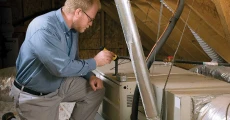
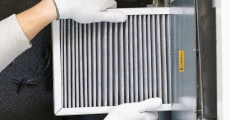
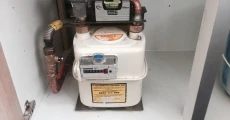


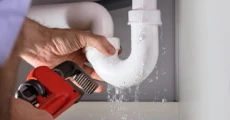
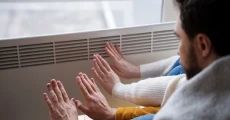
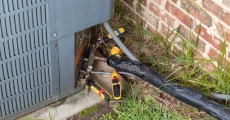


In A Nutshell
While these steps can often resolve common heating issues, some problems require expert hands. If you’ve worked through this list and your heater still isn’t heating, it’s time to call in the professionals for heating repair charlotte nc. CLT Appliance Repair specializes in diagnosing and fixing complex heating issues. Our team of certified technicians can quickly identify the root cause of your heating woes and provide efficient, long-lasting solutions.
FAQs
For optimal performance, change your furnace filter every 1-3 months, depending on usage and environmental factors.
This could be due to a faulty thermostat, pilot light issues, or problems with the gas supply. Check these components first before calling a professional.
A slight burning smell is common when first using your heater after a long period, usually due to dust burning off. However, if the smell persists, turn off the system and call a professional.
Regular maintenance, clean filters, proper insulation, and programmable thermostats can all contribute to improved heating efficiency.
Most heating systems last between 15-20 years with proper maintenance. However, efficiency may decrease in the later years of operation.
Don't let a malfunctioning Heater disrupt your daily life. Contact CLT Appliance Repair today at 704-606-9043 to schedule your Heater repair service.
We'll have your Heater back to optimal performance in no time!
Dryer Repair Charlotte NC | Washing Machine Repair Charlotte NC | Refrigerator Repair Charlotte NC | Microwave Oven Repair Charlotte NC | Freezer Repair Charlotte NC | Dryer Vent Cleaning Charlotte NC | Dishwasher Repair Charlotte NC | Cooktop Repair Charlotte NC | Stove Repair Charlotte NC | Charlotte Ice Maker Repair | Garbage Disposal Repair Charlotte NC | Plumbing Repair Charlotte NC | Water Heater Repair Charlotte NC
Admiral Appliance Repair | Amana Appliance Repair | Bosch Appliance Repair | Electrolux Appliance Repair | Frigidaire Appliance Repair | General Electric Appliance Repair | Haier Appliance Repair | Hotpoint Appliance Repair | Jenn-Air Appliance Repair | Kenmore Appliance Repair | KitchenAid Appliance Repair | LG Appliance Repair | Magic Chef Appliance Repair | Maytag Appliance Repair | Roper Appliance Repair | Samsung Appliance Repair | Speed Queen Appliance Repair | Whirlpool Appliance Repair | Dacor Appliance Repair | Viking Appliance Repair | Thermador Appliance Repair | Sub-Zero Appliance Repair | Wolf Appliance Repair | Monogram Appliance Repair | Bertazonni Appliance Repair | BlueStar Appliance Repair | Thor Appliance Repair | Miele Appliance Repair | Cafe Appliance Repair | GE Appliance Repair
Freezer Repair Indian Land SC | Freezer Repair Indian Trail NC | Freezer Repair Pineville NC | Freezer Repair Rock Hill SC | Freezer Repair Belmont NC | Freezer Repair Matthews NC | Freezer Repair Lancaster SC | Freezer Repair Cornelius NC | Freezer Repair Fort Mill SC | Freezer Repair Concord NC | Freezer Repair Denver NC | Freezer Repair Monroe NC | Freezer Repair Mooresville NC | Freezer Repair Harrisburg NC | Freezer Repair Lake Wylie SC | Freezer Repair Huntersville NC | Freezer Repair Kannapolis NC | Freezer Repair Mint Hill NC | Freezer Repair Waxhaw NC | Freezer Repair Troutman NC | Freezer Repair Davidson NC | Freezer Repair Gastonia NC | Freezer Repair Charlotte NC

